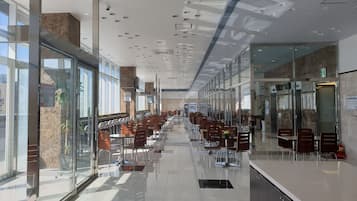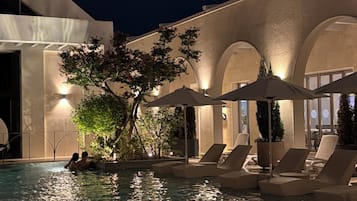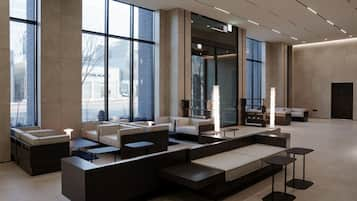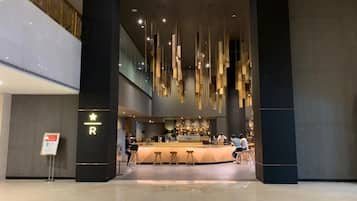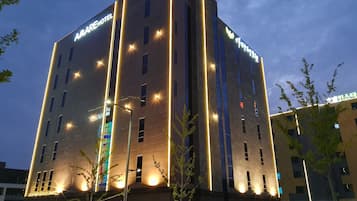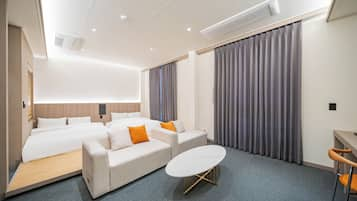Hyangchon Cultural Center and Daegu Literature Museum are great to visit together because they're in the same building. The former, where you can experience Daegu in the 1900s, is great to visit with children. The latter is an exhibition hall dedicated to writers who were active in Daegu. It's a great place for discovering new things about Daegu's literary scene. What's also great is getting out of the sun in the summer and relaxing in a lush forest. Daegu Arboretum, built upon the land which was once a landfill, is a popular place of relaxation for locals year-round.
- 1
Kim Kwang-seok Street
Take a stroll to admire the murals

- Parejas
- Grupos
- Historia
- Foto
- Solteros
Kim Kwang-seok Street is a must-see on your travels to Daegu. It’s a mural-adorned street celebrating singer Kim Kwang-seok’s (1964–1996) life and music, located in his birthplace of Daebong-dong about 350 metres away from Bangcheon Market.
You can view murals and sculptures created in Kim Kwang-seok's image. His masterworks flow gently out into the street, and you can listen to musicians singing his songs at the outdoor venue. Check out any one of the cosy cafés along the street and take a moment to remember a singer whose life was cut tragically short.
Ubicación: Daebong-dong, Jung-gu, Daegu, South Korea
Foto de Daegu City Official (CC BY-SA 4.0) modificada
- 2
Suseong Lake
A scenic and fun spot for the family

- De aventura
- Económico
- Parejas
- Grupos
- Foto
- Solteros
Suseong Lake in Dusan-dong is a place for slow walks and relaxation in the heart of the Daegu. The lake, which was created during the Japanese occupation period, has beautiful surroundings and features walking trails and recreational facilities.
Suseong Recreation Area and Arte Suseong Land surround the lake, which was used as a filming location for many films. You can go for a paddle boat ride or enjoy water fountain shows, and there are many restaurants and cafés around the lake that are popular date spots. It’s especially charming at night as the sun sets over the lake, and the musical fountains are worth checking out, too.
Ubicación: Dusan-dong, Suseong-gu, Daegu, South Korea
MapaFoto de Daegu City Official (CC BY-SA 4.0) modificada
- 3
Donghwasa Temple

- Económico
- Historia
Donghwasa Temple (Temple of Winter Flowers) is an ancient shrine on the southern side of Palgongsan Mountain. It dates back to 493 AD, and was built by a monk named Guel-Dal during the 15th year of King Soji’s reign.
The Buddhist shrine was named after the flowers of Paulowania trees that grew within its compound. The prayer halls and pavilions are decorated with stone statues of mythical creatures and Buddhist deities – check out the 17-metre-tall sculpture of Seokjoyaksa Yeoraebul, which was created as a petition to God for reunification.
Ubicación: 1, Donghwasa 1-gil, Dong-gu, Daegu, South Korea
Teléfono: +82-53-980-7900
Mapa - 4
Daegu National Museum

- Parejas
- Familias
- Historia
Daegu National Museum, one of the city’s largest museums, showcases the unique heritage of Daegu and the Buddhist culture of Gyeongsangbuk-do Province. The museum has about 30,000 artefacts dating back to the Neolithic era and the Korean dynasties, as well as Buddhist crafts, sculptures, and statues.
Outside Daegu National Museum is a landscaped garden with several stone monuments that were excavated from several archaeological sites in Daegu. Must-sees include a 5-storey stone pagoda dating back to the Goryeo dynasty, a dwelling site from the Bronze Age, and a restored kiln from the Three Kingdoms period.
Ubicación: 321, Cheongho-ro, Suseong-gu, Daegu, South Korea
Horarios: Tuesday–Friday from 9 am to 6 pm, Saturday–Sunday from 9 am to 7 pm (closed on Mondays)
Teléfono: +82-53-768-6051
MapaFoto de Trainholic (CC BY-SA 3.0) modificada
- 5
Daegu Arboretum
- Económico
- Parejas
- Familias
- Grupos
The total transformation is hard to believe, but the Daegu Arboretum, which sports a new look with the changing flowers and trees every season, used to be a landfill site at one point. Seeing all 21 themed sections, from the entrance to the artificial waterfall, takes more than an hour so wearing comfortable shoes is highly recommended. Admission and parking are free. Public transportation is a great alternative to driving because you can easily walk from Daegok Station of the Daegu Metro.
Ubicación: 342 Hwaam-ro, Dalseo-gu, Daegu, South Korea
Horarios: Daily from 9 am to 6 pm
Mapa - 6
Buinsa Temple

- Económico
- Historia
Daegu’s Buinsa Temple dates back to the 7th century and serves an affiliate temple of Donghwasa Temple. It’s also known as the memorial temple for Queen Seondeog of the Silla dynasty. A shrine for the queen was built within the premise, with memorial rituals taking place every 3rd lunar month.
One of the most popular attractions in Buinsa Temple is the west pagoda. It’s believed to have been constructed during the unified Silla era. Entrance is free year-round, but you’re welcomed to make a donation to the temple.
Ubicación: 967-28, Palgongsan-ro, Dong-gu, Daegu, South Korea
Mapa - 7
Dalseong Park

- Económico
- Parejas
- Familias
- Grupos
Dalseong Park may sound like any other ordinary local park, but it's a famous spot that nearly every Daegu local has visited at least once. The sheer size of the park will amaze you right from the entrance and there's even a zoo on park grounds. Dalseong Park is well-landscaped, making it an ideal destination for long, slow walks. Seemingly endless stretches of lawns may make long walks sound a bit intimidating, but there are lots of benches and other areas where you can sit, relax and take a break. In spring, spectacular cherry blossoms and other spring flowers in bloom are a must-see.
Ubicación: 35 Dalseonggongwon-ro, Jung-gu, Daegu, South Korea
Horarios: Weekdays from 5 am to 9 pm
MapaFoto de 최옥석 (CC BY-SA 4.0) modificada
- 8
Inheung Village

- Económico
- Parejas
- Familias
- Grupos
Inheung Village, also known as the residence Village of the Nampyeong Mun clan, descendants of the Goryeo-era politician Mun Ikjeom, is well-known for serving as the filming location of the K-drama Moon Lovers: Scarlet Heart Ryeo. It's a charming village where seasonal flowers bloom every spring, summer and autumn. The pond Inheungwon at the entrance to the village is modelled after Wolji in Gyeongju, with a unique pine tree that is hundreds of years old. The village isn't a major tourist destination despite its importance and fame, so you can expect to enjoy the atmosphere of a beautiful hanok village without the hustle and bustle.
Ubicación: 16 Inheung 3-gil, Hwawon-eup, Dalseong-gun, Daegu, South Korea
MapaFoto de 봉지 (CC BY-SA 2.0) modificada
- 9
Bullo-dong Ancient Tomb Park

- Parejas
- Familias
Bullo-dong Ancient Tomb Park is a mass burial site about 5 km north of Daegu city. It covers 330, 000 sq m, with around 200 grassy hillocks across the valley. These hillocks are known as tumuli or burial mounds, and they date back to the 2nd and the 6th centuries. The mounds are of nobles and commoners who lived during the period of Korea’s Three States.
Ubicación: 1-17 Bullo-dong San, Dong-gu, Daegu, South Korea
MapaFoto de riNux (CC BY-SA 2.0) modificada
- 10
Hyangchon Cultural Center

- Económico
- Parejas
- Familias
- Grupos
The Hyangchon Cultural Center is a humorous yet realistic reproduction of Daegu in the 1900s, making it a great place to travel back in time for a day and reminisce. There are plenty of fun activities on hand, like trying on some period-correct school uniforms. The Daegu Literature Museum is a place to remember and commemorate writers who were once active in Daegu. It may seem more difficult to visit than the Hyangchon Cultural Center, but the nice part is that there's no admission fee.
Ubicación: 449 Jungang-daero, Jung-gu, Daegu, South Korea
MapaFoto de hyolee2 (CC BY-SA 4.0) modificada




